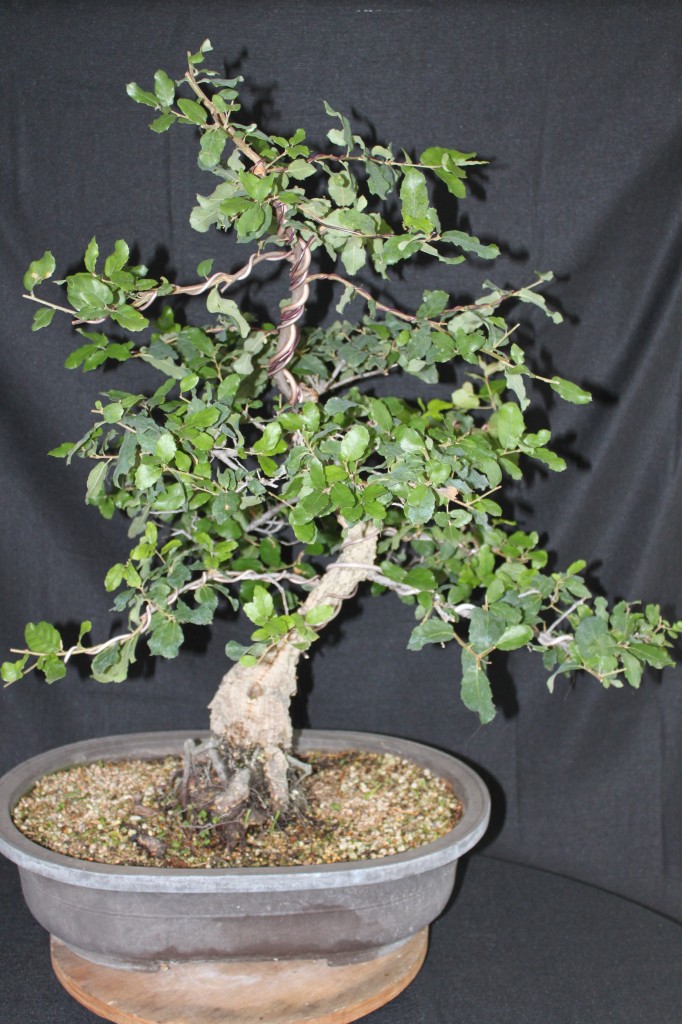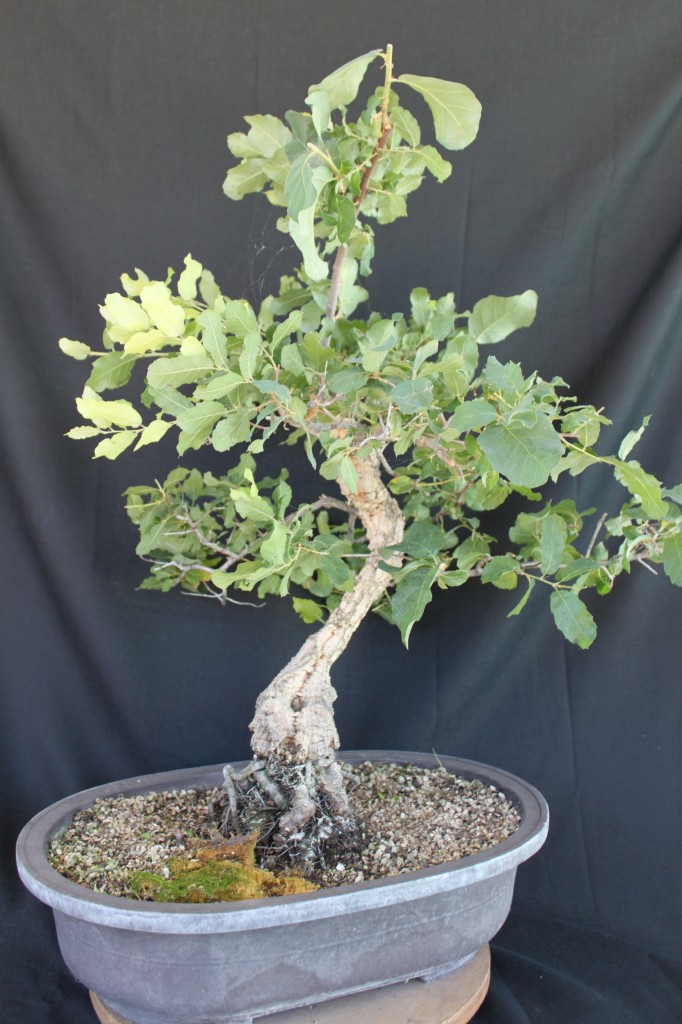Oak Bonsai
Oak Bonsai
Oaks are one of the great underrated species of bonsai. With their small leaves (in some varieties) tendency to form massive trunks, and rough textured bark, they give a great impression of a huge, old tree in miniature. However, the species of oak most suitable for bonsai are not native to Japan, which may explain why Oak has not been a traditional species of tree for bonsai. While there is a species of oak native to Japan, its wood has traditionally been used in making drums, which may explain why it has not been used for bonsai. The tradition of using oaks for bonsai actually originated in California in the 1950’s.
Background:
Oak, (genus Quercus) consists of about 600 species of tree, native to the Northern Hemisphere. Oaks come in two varieties, deciduous and evergreen. The evergreen oaks tend to be native to warmer climes, and thus keep their leaves year round. Oak wood has traditionally been used for furniture making and construction, as oaks tend to form very dense, durable wood.
Most species of Oak make good bonsai, but there are some standouts. Two of these are Mediterranean species. One example is the Cork Oak, Quercus Suber. The bark of this evergreen Oak has been used for hundreds of years to make corks for wine bottles. Cork Oaks develop thick trunks quickly, and they are distinguished by their very thick, corky bark. Care must be taken in wiring a thick branch on a Cork Oak, as they fracture easily. Cork Oaks also do not react well to root pruning, so they must be repotted with care.
The other Mediterranean Oak is the Holly Oak or Holm Oak, Ouercus Ilex. These evergreen Oaks share the Atlas Mountains of North Africa with the Atlas Cedar. In England they are listed as a non-native invasive species – which means they can legally be collected for bonsai.
Three other excellent species for bonsai are the California Oaks, the Coast Live Oak (Quercus Agrifolia), the Golden Cup Oak (Quercus Chrysolepis), and The California Scrub Oak (Quercus Berberifolia). All are evergreen oaks, and both respond well to wire training and root pruning. Coast Live Oak is used in landscaping in California, and specimens can be found in landscape nurseries.
Where to Get One:
In California, the Coast Live Oak and the Cork Oak are both popular for landscaping, and specimen trees can be found in nurseries. Oak trees can be collected from the wild (where legal) but be careful. Most oaks are sensitive to root disturbance. If you collect one, only do it in early spring, get as much root as you can and be prepared for a long recovery period. . You can also grow oaks from seed if you find and collect acorns. If you find acorns and decide to try your hand at growing an oak from seed, keep your acorns protected, as birds and squirrels will steal them.
What To Do With It After You Get It:
If the tree is large enough and the trunk is thick enough, put it in a large growing pot and start styling. Otherwise, put it in a tub or in the ground to fatten it up. Oaks grow rapidly with proper soil and lighting. It is not uncommon to see four or five feet of shoot growth per year from a healthy oak with the right growing conditions. Because of this, oaks can be developed rapidly for bonsai with the right pruning, soil and nutrition programs.
Soil and Potting:
Even though most Oaks used for bonsai are evergreen trees, their soil needs are similar to deciduous trees, because they are broadleaf evergreens. They do well in a mixture of 60% aggregate and 40% organic matter. They should receive supplemental fertilizer during the growing season. Oaks are very sensitive about having their roots disturbed, and they should only be repotted in early spring. Root pruning should be kept to the minimum necessary to do the job. If you treat an oak like you would a Japanese Maple, you may end up with a dead oak. Even for a fully styled oak bonsai, the pot should be a little large (by bonsai standards) due to the root sensitivity issue. Oaks do not produce significant flowers, and bonsai oaks may or may not produce acorns. For this reason, a fertilizer program for an oak bonsai should emphasize nitrogen, preferably from an organic source like blood meal.
Siting:
Oaks grown for bonsai can tolerate full sun, and need about four hours of direct sun per day, but should spend the rest of the day in partial or full shade. If sited in full shade, oak bonsais can suffer diebacks or develop extremely large leaves.
Growth, Pruning and Shaping
After emerging from dormancy, a bonsai oak will typically throw long shoots, with as many as seven or eight nodes. Any shoots not contemplated as future branch structure should be pruned back to two or three nodes. Older bonsai Oaks may flower (the flowers are called catkins) and produce acorns. Whether you leave them is up to you. The preferred method for shaping the Cork Oak is by pruning. Wire must be applied gently, partly to avoid damaging the bark, and partly because the branches become brittle. Trying to bend a branch which does not flex easily is not advisable, and almost always breaks the cambium and results in the death of the branch. The Coast Live Oak is more amenable to wiring, and can be trained into extreme bends, as it has evolved to survive in very windy environments.
Oaks can be styled in just about any bonsai style. Their wood is very durable, making them one of a few broadleaf species that can have driftwood or deadwood features. Cork Oaks tend to work best in informal upright or slant styles, as these styles are natural to them. The Coast Live Oak can be styled as an informal upright or slant style, but in nature it is often seen growing down hillsides in semicascade or raft style.
Closing Remarks:
Everyone who has grown up around oak trees can appreciate their strength, their resilience, and their incredible beauty. Oaks have witnessed historical events, sheltered picnics, and provided wood for everything from tables to ships, and anyone can capture that strength and beauty in miniature with an oak bonsai. Oaks can live for hundreds of years, making an Oak bonsai the treasure of a lifetime.


